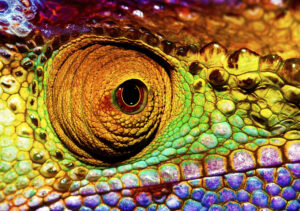Today I want to share one of the methods to transform an infrared image from a RAW file to various stages of a final image. The actual final image chosen is about preference and totally up to the photographer.
That is the reason I will show each stage of the process, as each result could have been my final image. Enjoy!
RAW image
I converted my camera to infrared through Lifepixel. The provide many conversion options, so you are likely to find one that suits your preferences. I chose Super Color, which provides the most flexibility and can easily achieve a blue sky.
Some cameras allow you to set a custom white balance. That is the case with my camera, so this is the “out of camera” result. For cameras which do not allow custom white balance settings, the image will start as fuchsia; which can still be processed to the final image you will see at the end of the blog.
The next step is to swap the RED and BLUE channels. To do this, open the “channel mixer” in Photoshop. Choose the RED channel from the drop down menu. You will see that the RED channel is set to 100% for RED and zero for GREEN and BLUE. Put a zero for the RED channel and 100% for the BLUE channel. Next select the BLUE channel from the drop down menu. You will see that the BLUE channel is set to 100% for BLUE and zero for GREEN and RED. Put a zero for the BLUE channel and 100% for the RED channel. Hit enter and you should see the following:
Since I have the Super Color conversion, my sky will go from “orange” to blue and the colors that represent “green” foliage turn a varying degrees of yellow. This is image can be considered final and is often referred to as “false color.”
If you are working your way to Black and White infrared, you can continue to process the image. For me, the next step is to remove the Yellow cast. To do this, first flatten your image and then select Hue/Saturation adjustment layer. Choose Yellow from the drop down menu. Then select the dropper+ icon and click on an area of the image that is yellow. I try to click on an area of deep yellow. Now, drag the saturation slide all the way to the left and you will see the yellow foliage turn grey/white. You may need to select additional areas depending on whether the white balance was accurate. If your white balance is off, you may find the “green” foliage is more of a rusty color, in which case you may need to desaturate red and yellow. Here was my resulting image:
Again, this image can be considered finished. You may get to this stage and want to add some contrast and “glow” to deepen the image. In this case, because I was moving towards black and white infrared, I did not process the image further at this point. I wanted to complete my transformation, then adjust contract and “glow.”
There are a number of ways to get to black and white infrared:
- Create a black and white adjustment layer in Photoshop.
- Create another Hue and Saturation layer and desaturate with RGB selected (a step that could have been done above).
- Use Macphun Tonality Pro (discount code: ROADRUNNER), TopazLabs B&W Effects (discount code: roadrunner), or OnOne Perfect B&W (contact us here for the discount code).
- Other software.
I also added a “glow” effect, typically associated with infrared images. I did this through an action I created. However, you could also achieve “glow” with various Photoshop plugins.
For those folks new to Infrared imagery, now is the time to convert that old camera body sitting on a shelf. If you wait until spring, any of the conversion companies will be busy and waits can be long, so act now! When spring returns and the leaves pop out all great and lush, you will be ready!
To see a demonstration of these techniques, click here for our video tutorial.
![]()






Gary Kohn
9 Jan 2015Cool…can a point and shoot be converted to provide RAW files, or will they be jpegs?
Denise Silva
9 Jan 2015IF the point and shoot camera has RAW image files, then yes. It will depend on the camera. Please note though, if you send a point and shoot in for conversion, and if that point and shoot results in both RAW and jpg, and the conversion company sets a “custom white balance” for the infrared conversion, only the jpg will maintain the “custom white balance”. The RAW file will look fuchsia, because it doesn’t retain the camera body settings (depending on the brand). I leave the caveat because with some brands (NIKON and CANON) that have their own proprietary RAW file processing software, you can retain camera body settings on RAW files.